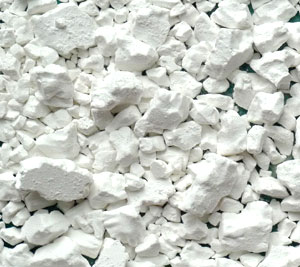Kuzu Root Starch (kudzu, kuzuko, japanese arrowroot)
Kuzu root starch, also called kudzu or kuzuko, is a traditional starch widely used in Japan for its superior thickening properties. Kuzu root starch is natural and unprocessed unlike corn and potato starch. Kudzu is far superior in jelling strength, taste, and texture. It produces bright, translucent sauces, adds a shiny gloss to soups, and provides a smooth texture for sauces and gravies with no starchy or interfering taste. Kuzu root starch can also be used to obtain a light and crisp coating when deep-frying, in icings, shortcake toppings and pie fillings. A fantastic application of kudzu in modernist cuisine by Chef Ferran Adria is to make olive oil chips.
Kuzu Root Starch Origin
 The Kuzu Root Starch is extracted from the roots of the kuzu or kudzu plant. The kuzu (Pueraia lobata) plant is a prolific, tough, fibrous vine with heart-shaped leaves that has been used as a food in China for more than 2,000 years. In Japan, kuzu has been praised in poetry and considered a healthy food and ideal thickener for over 1000 years. Kudzu roots are among the largest in the world, ranging in length from three to seven feet and weighing between 200 to over 400 pounds. Traditionally the leaves, seeds, flowers and roots were used in making vegetable dishes, noodles, dumplings, beverages, desserts and pickles. The vines were used to weave baskets and in making clothing, fishing line, and paper.
The Kuzu Root Starch is extracted from the roots of the kuzu or kudzu plant. The kuzu (Pueraia lobata) plant is a prolific, tough, fibrous vine with heart-shaped leaves that has been used as a food in China for more than 2,000 years. In Japan, kuzu has been praised in poetry and considered a healthy food and ideal thickener for over 1000 years. Kudzu roots are among the largest in the world, ranging in length from three to seven feet and weighing between 200 to over 400 pounds. Traditionally the leaves, seeds, flowers and roots were used in making vegetable dishes, noodles, dumplings, beverages, desserts and pickles. The vines were used to weave baskets and in making clothing, fishing line, and paper.
The process of making kuzu root starch is usually very artisan. Kuzu wild roots are harvested when the sap gathers in the root, carried down from the mountains on backpacks and cleaned. Each root is hand-cut into chunks that are crushed into fibers, soaked and rinsed, creating a thick paste. The kudzu paste is repeatedly washed and filtered in cold mountain spring water until it becomes a pure white starch. The kuzu starch is then allowed to dry naturally for 90 days, crushed into small chunks and packed.
The kuzu plant is sometimes known as Japanese arrowroot. But kudzu root starch should not be confused with arrowroot starch. While both kuzu and arrowroot starches are made by a simple, natural process, Kuzu is far superior in jelling strength, taste, texture, and healing qualities. Corn starch, in particular, is not recommended because it is highly processed and treated with chemical bleaches and toxic extracting agents. Potato starch is also mass-produced, and chemicals are used to accelerate the extraction process.
Kuzu Root Starch Function
 Kudzu root starch is an exceptional thickener that can be used like corn starch but it is unprocessed and is far superior in jelling strength, taste, and texture. Kuzu is a superior quality starch with a smooth texture, neutral flavour and translucent results.
Kudzu root starch is an exceptional thickener that can be used like corn starch but it is unprocessed and is far superior in jelling strength, taste, and texture. Kuzu is a superior quality starch with a smooth texture, neutral flavour and translucent results.
Kuzu has been valued for centuries as a starch that is soothing and easy to digest. According to Subhuti Dharmananda, Ph.D., director of the Institute for Traditional Medicine and Preventive Health Care in Portland, Oregon, kuzu contains a very high concentration of flavonoids, which are responsible for its strong medicinal effect on the digestive and circulatory systems. Flavonoids, which occur naturally in kuzu and other plants, are known to be antioxidants. However, they also have the ability to inhibit the contraction of smooth muscle tissue, thereby increasing blood flow and relieving cramping in the intestines. Kuzu is also believed to suppress a desire for alcohol.
Kuzu Root Starch Applications
Kudzu has been used for centuries in East Asia to make herbal teas and tinctures. In Japan, the plant is known as kuzu and the starch named kuzuko. Kuzuko is used in dishes including kuzumochi, mizu manjū, and kuzuyu. Kuzu is also used to prepare delicious vegetable dishes such as Lo Mein, Chow Mein, sweet and sour vegetables, and glazed vegetables.
In traditional cooking, kuzu is an ideal thickener for soups and stews, sweet and savoury sauces, glazes, pie fillings, puddings, custards and many desserts. It produces bright, translucent sauces, adds a shiny gloss to soups, and provides a smooth texture for sauces and gravies with no starchy or interfering taste. In Vietnam, kudzu is dissolved as a beverage, drunk with pomelo oil. Kuzu root starch can also be used to obtain a light and crisp coating when deep-frying, in icings, shortcake toppings and pie fillings.
A fantastic application of kuzu in modernist cuisine by Chef Ferran Adria is to make olive oil chips and other flavored glasses and translucent chips. Below is the Olive Oil Chip.
Kuzu Root Starch Properties
Temperature (gels and melts): not heat sensitive.
Texture: gelatinous.
Appearance: clear.
Flavor release: excellent, has neutral flavor.
Mouthfeel: smooth and gelatinous.
Freeze / Thaw stable: No, syneresis caused by freezing.
How to use Kuzu Root Starch
Concentration Range: Use 2% for broths, 5%-7% for glazes, 12% for dense puddings and tofu, 8% for dehydrated crunchy films.
Dispersion: For most preparations, completely dissolve the measured amount of Kuzu in a little cold water, then add it to the other ingredients near the end of cooking time.
Hydration: Gently bring the mixture to a simmer, stirring constantly while the Kuzu thickens and becomes translucent.
Special uses: crunchy films.




 (3 votes, average: 4.33)
(3 votes, average: 4.33)

